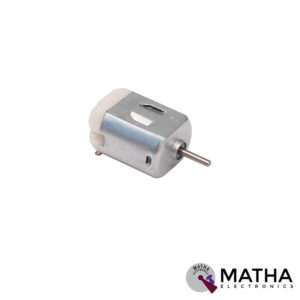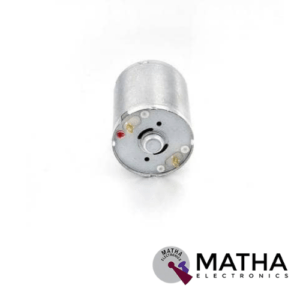DC Toy Motor
Motor Type 3V-4.5V Cell Phone Micro Vibrator
100 RPM L-Shape BO Motor
- Low density: lightweight, low inertia.
- Capability to absorb shock and vibration as a result of elastic compliance.
- Ability to operate with minimum or no lubrication, due to inherent lubricity.
- The relatively low coefficient of friction.
- Operating Voltage: 3~12 V DC
- Shaft Length: 8.5mm
- Shaft Diameter: 5.5mm (Double D-type)
- No Load Current: 40-180mA.
- Rated Speed(After Reduction): 100 RPM
- Rated Torque: 1 Kgcm
- Cost-effectiveness of the injection-molding process.
- Elimination of machining operations.
- Low density: lightweight, low inertia.
- Uniformity of parts.
- Capability to absorb shock and vibration as a result of elastic compliance.
- Ability to operate with minimum or no lubrication, due to inherent lubricity.
- The relatively low coefficient of friction.
- Corrosion-resistance; elimination of plating, or protective coatings.
- The quietness of operation.
- Tolerances often less critical than for metal gears, due in part to their greater resilience.
- Consistency with the trend to greater use of plastic housings and other components.
Generator Motor Big
Generator Motor Small
Bo Motor Double Shaft 150RPM
- RPM: 150
- Operating Voltage : 3V - 9V
- Gear materials: plastic.
- Motor types: permanent-magnet.
- Brush-type: Brush.
- Uncommitted motors: Homopolar motors.
- Magnet types: ferrite magnets.
- Torque: Approximate 2.5Kg/cm.
- Low density: lightweight, low inertia.
- Capability to absorb shock and vibration as a result of elastic compliance.
- Ability to operate with minimum or no lubrication, due to inherent lubricity.
- Relatively low coefficient of friction.
- Corrosion-resistance; elimination of plating, or protective coatings.
- Quietness of operation.
- Tolerances often less critical than for metal gears, due in part to their greater resilience.
- Consistency with trend to greater use of plastic housings and other components.
BO Motor Double Shaft 200 RPM
- Shaft length: 7 mm Motor Design: Straight Dual Shaft
- Shaft Diameter: 5.5 mm
- Size: 55 x 48 x 23 mm.
- Operating Voltage: 3 to 12V.
- Current (without loading): 40-180mA.
- RPM: 200 rpm.
- Output Torque: 0.35 kg cm.
- Cost-effectiveness of the injection-molding process.
- Elimination of machining operations.
- Low density: lightweight, low inertia.
- Uniformity of parts.
- Capability to absorb shock and vibration as a result of elastic compliance.
- Ability to operate with minimum or no lubrication, due to inherent lubricity.
- The relatively low coefficient of friction.
- Corrosion-resistance; elimination of plating, or protective coatings.
- The quietness of operation.
- Tolerances are often less critical than for metal gears, due in part to their greater resilience.
- Consistency with the trend to greater use of plastic housings and other components.













